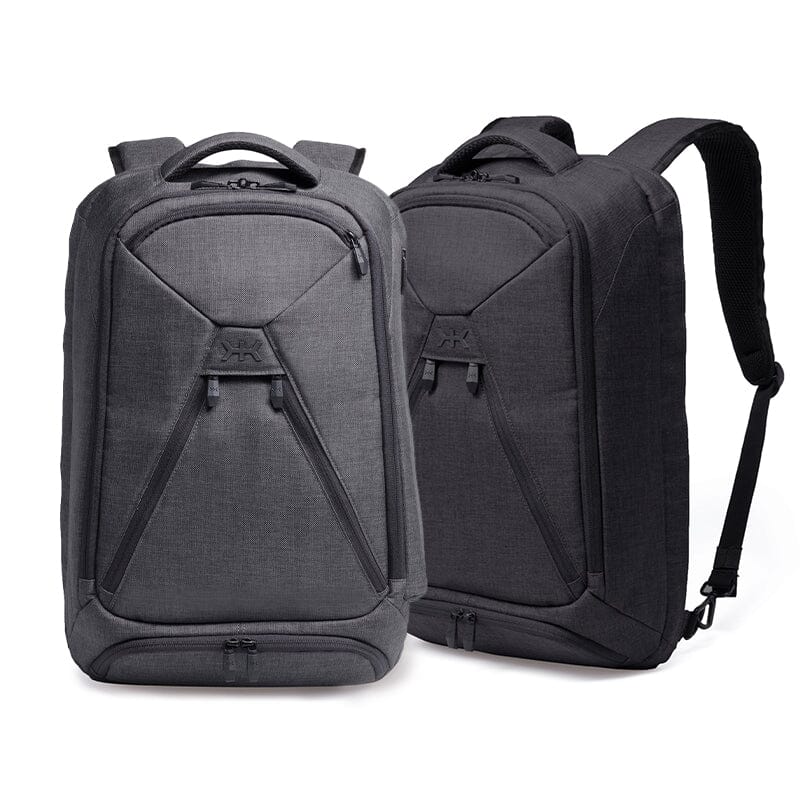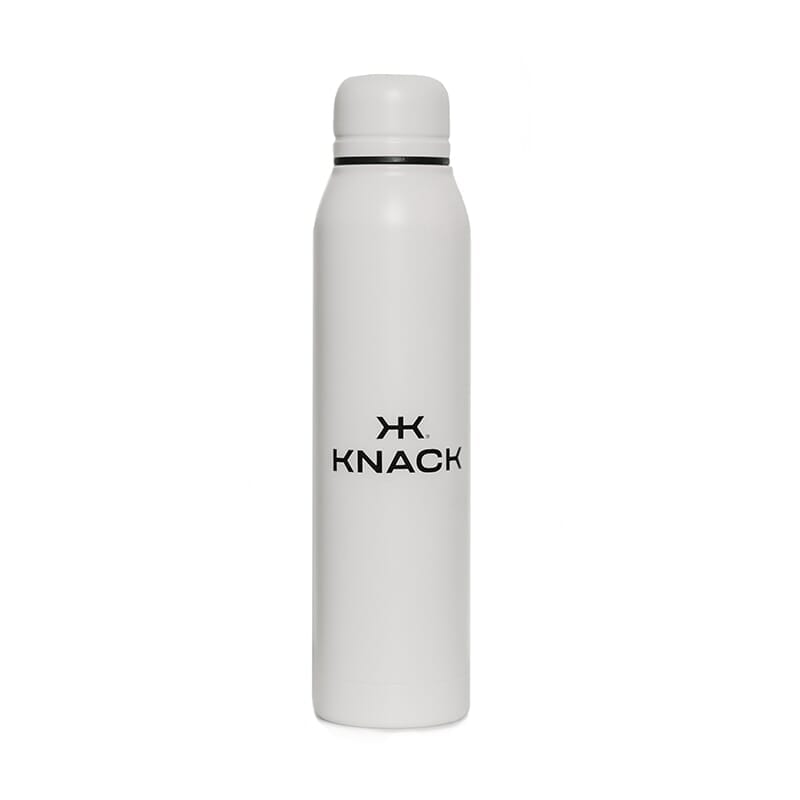Feeling a bit lost in the world of backpack sizes? Uncertain about how many liters your ideal backpack should be? This all-inclusive guide to backpack sizes and liters is here to demystify the process. Whether you're an experienced traveler or just starting out in the work world, check out this review to ensure that your next backpack purchase is a breeze.
Reading Time: 6 minutes
|
Subscribers: 24,837
|
Do you want a new backpack but are feeling overwhelmed by all the sizing jargon? You're not alone – backpack companies can make it feel like you need a degree in Industrial Design to choose the bag that’s right for you.
While it's easy to know, for example, that you want a laptop compartment in your new backpack, things get confusing when presented with the choice between a 2,500 cubic inch or a 40-liter laptop backpack (which are pretty much the same size, by the way). So, if you want some help unraveling the mysteries of backpack sizes, check out this handy guide before you browse online or hit the stores. It's your key to simplifying the backpack sizing puzzle.
Backpack Size and Liters Quick Chart
A simple, practical breakdown of backpack volumes (in liters), what they actually fit, and how to pick the right size for your everyday and on-the-go life.
|
Carry-On Backpack Sizes
|
Liters
|
Cubic Inches
|
Use
|
|
Daypack or Small Backpack
|
15 - 24 Liters
|
915 – 1465 cu inches
|
Exploring cities, everyday adventures, errands.
One-night trips.
|
|
Medium Backpack
|
24 - 35 Liters
|
1465 – 2135 cu inches
|
Work, carrying your laptop. Overnight trips of 2-3 days
|
|
Large Backpack
|
30 - 45 Liters
|
1830 – 2746 cu inches
|
Work (if you carry a lot of stuff or a large laptop). Overnight trips of 3-4 days.
|
Quick Reference for Backpack Use and Liter Size
-
Best size for work: 20–24L
-
Best for hybrid work + travel: 24–30L
-
Best for carry-on travel: Up to 45L
-
If you want one bag for everything: Go expandable
What Backpack Liters Actually Mean
Backpack liters refer to the total interior volume or carrying capacity of a bag—essentially how much usable space you have inside for your gear, tech, clothing, and daily essentials. Instead of measuring the outside of the bag, liters measure the internal compartments and pockets, giving you a more accurate sense of how much the backpack can hold. This makes liters one of the most reliable ways to compare sizes and choose the right capacity for your everyday carry, work needs, or travel setup.
Shopping for the perfect backpack can get confusing fast—especially when you’re trying to understand backpack sizing, backpack volume, and all the different backpack types out there. Even if you know you want features like a dedicated laptop sleeve, choosing the right backpack size becomes tricky when brands list capacity in both cubic inches and liters. And since liters measure interior carrying capacity, they matter far more than exterior dimensions when comparing everyday backpacks or evaluating common backpack sizes. Before you start browsing, this guide will help you understand why liters matter, how to find the right backpack, and how to choose a style that fits your needs—so you can feel confident you’re getting the right size for work, travel, and everything in between.
In this backpack size guide, we’ll cover:
- Why liters matter more than exterior dimensions
- How backpack volume is measured
- Common backpack sizes and what they actually hold
- How to choose the right backpack size for work, travel, or everyday use
- Tips for matching backpack style and type to your needs
- What to look for in organization features like laptop sleeves and compartments
- How to compare backpacks with different liter capacities
How Backpack Size Is Measured
Since size matters, it follows that being able to compare sizes among the huge number of backpacks on the market is important. But before diving into the differences between various backpack sizes, let’s get grounded in how backpacks are measured.
First, it’s essential to understand that when we talk about “sizing”, we’re talking about the three-dimensional space the backpack provides to carry things (i.e., its volume or capacity), not its exterior dimensions. This volume is usually expressed in one of two ways: either by liters or cubic inches. Even in the US, liters are the most popular way to describe the size of a backpack.
MORE >> Convert liters to cubic inches
So far, so good. Now here’s where it gets tricky. The methods that companies use to calculate a backpack’s volume, whether in liters or cubic inches, are all over the map.
Calculating a backpack's size by multiplying its exterior height, width, and depth might seem like the simplest route, but here's the scoop: it's not really accurate. This method works okay only for plain rectangular bags like your standard grocery tote. But when you're dealing with the highly-functional backpacks that you take to work or on your travel adventures, it's like trying to fit a square peg in a round hole. The backpacks you’re looking at have external curves as well as interior pocketing, compartmentalization, and organization that eats up capacity. So, our advice is to ditch the high school math formula.
Most reputable brands (including Knack) measure a backpack’s volume by following the American Society for Testing and Materials (ASTM) F2153-07 standard. This standard requires all fully enclosed pockets and compartments to be filled completely with 20mm plastic balls and closed. The balls are then dumped out into a graduated cylinder and their volume is measured. The resulting measurement is expressed in either liters or cubic inches. Voila! An accurate way to measure backpack size. Another version of this approach, while even slightly more accurate, but much harder to do efficiently, uses water instead of the plastic balls.
Okay, so if there’s an accurate standard used to calculate backpack volumes, shouldn’t all published sizes be comparable? Unfortunately, no. Some companies also include the volume of pockets/compartments that are not fully zipped (think exterior water bottle pockets, exterior compression pockets, shoulder strap pockets, etc.) in their final backpack sizing measurements. We believe that including the capacity of these types of pockets gives a misleading depiction of a backpack’s true capacity so Knack’s volume measurements always follow the ASTM standard to the letter.
Why Backpack Size Matters
Whether carrying your laptop and daily essentials to work or travelling with clothes for a week, your backpack can get filled pretty quickly with some heavy items. So having the right-sized backpack is critical to ensuring that you can comfortably haul all the stuff you need. For example, a backpack that is too large will be heavier than needed and is more susceptible to carrying too many “just in case” items which also add unnecessary weight.
Additionally, you don’t want a backpack that is too small to carry the things you absolutely need to have with you.
Choosing the right backpack starts with understanding your daily needs and how much backpack volume you actually use. With so many different types, including everyday backpacks, duffel backpacks, laptop backpacks, and full backpacking backpacks, a simple backpack size guide helps you avoid guesswork. The key is focusing on interior space (liters), the main compartment layout, and features like multiple compartments, padded shoulder straps, and a padded laptop sleeve for support and organization.
If you’ve ever wondered, “What is the standard size for a backpack?” most standard backpack sizes fall in the 20 to 30 liter range. A medium backpack in this range gives you enough room for essentials without feeling bulky, making it a go-to for work and everyday carry. For travel, you may need more capacity, or features like a trolley sleeve and carry-on size backpack dimensions that meet airline requirements.
Below is a simple, intent-based breakdown, now with Knack product recommendations, to help you find the perfect backpack for your workflow, travel style, or everyday life.
How to Choose the Right Backpack Size (Based on Intent)
For Work & Commuting
Recommended Size: 20–24 liters
A 20–24L everyday backpack is typically the best size for work. It fits:
- A padded laptop sleeve for 13", 15", or 16" laptops
- Chargers, notebooks, lunch, and small travel accessories
- A thoughtful design with multiple compartments
-
Comfortable padded straps or padded shoulder straps
Knack Recommendation:
"This is a great bag to use for everyday carry, as well as traveling without the hassle of transferring your daily carry items into another bag. The material is high-quality, the storage is well thought out, and the medium is just the right size for daily carry." - Brad B
For Travel (Personal Item or Carry-On)
Airline sizing can be tricky, so knowing your carry-on size backpack limits matters.
Recommended sizes:
-
Up to 45L — Works as a true carry-on size backpack
-
24–30L — Best for overnight trips
-
30–35L — Great for 2–4 day trips without checking a bag
A well-designed travel backpack can replace your duffel and weekender, especially when it includes a trolley sleeve, structured main compartment, and easy-access pockets.
Knack Recommendations:
For Hybrid Work + Travel (Knack’s Sweet Spot)
Recommended Size: 24–30 liters with expansion
If your life blends work and travel, an expandable hybrid bag saves you from switching backpacks throughout the week. These bags give you structured organization for work and extra backpack volume on travel days. Look for:
- Expansion up to 30L+
- A protected padded laptop sleeve
-
A trolley sleeve for rolling luggage
- A clean design that feels equally at home in meetings or airports
If your routine is a mix of co-working spaces, office days, and last-minute trips, an expandable bag gives you the flexibility you need with zero friction.
Knack Recommendation:
Size Comparisons: 20L vs 24L vs 30L vs 35L
Understanding how different liter capacities feel in real life makes it easier to choose the right backpack for work, everyday carry, hybrid use, or travel. Remember that liters measure interior space, not exterior size, so two backpacks with the same volume can look very different depending on design, structure, and the number of compartments. Below is a simple breakdown of what you can realistically expect each size to hold, along with Knack recommendations to explore as you compare.
How Big Is a 20L Backpack?
A 20-liter backpack is compact, lightweight, and perfect for minimal everyday carry.
Best for:
- Daily use
- Minimal carry or streamlined EDC setups
- Smaller laptops (13" and below)
- Light commuting or quick weekend errands
Knack Recommendation:
Knack does not offer a 20L bag because most professionals need more room.
If you want something close in footprint—but with more functionality—start with the Series 1 Medium Expandable Backpack, which compresses for everyday use but expands when needed.
How Big Is a 24L Backpack?
A 24-liter backpack is the sweet spot for everyday work, commuting, and hybrid use without feeling bulky.
Best for:
- Everyday work gear
- The perfect laptop size sweet spot (13", 15", 16")
- People who want room without extra bulk
- A great intro to hybrid work + travel setups
Knack Recommendations:
How Big Is a 30L Backpack?
A 30-liter backpack comfortably blends work and travel. It’s ideal for people who carry more but still want a clean, professional silhouette.
Best for:
- Work + travel hybrid lifestyles
- Enough room for clothes, shoes, and tech
- Commuters who carry gym gear
- Digital nomads or people splitting time between locations
Knack Recommendations:
How Big Is a 35L+ Backpack?
Backpacks in the 35L to 40L+ range are designed for travel, short trips, and efficient carry-on packing.
Best for:
- Short trips (2–4 days)
- Larger laptops (up to 16")
- Carry-on travelers who pack efficiently
- One-bag travel setups
Knack Recommendations:
The Benefits of an Expandable Backpack
Charts and rules of thumb are helpful, but there’s an even easier way to ensure that you buy the right size backpack: get an expandable backpack.
The capacity of expandable backpack, like a Knack Pack, is designed to grow and shrink based on whatever carry needs you have that day. As a result, the same expandable backpack can serve many different uses that require different sizes: work, travel, gym, and around town.
Knack Packs are lightweight, expandable, laptop backpacks that range in size from 15 liters (unexpanded) up to 46 liters (expanded).
Instead of owning separate bags, an expandable laptop backpack adapts to whatever the day brings:
- Work days: Carry your laptop, chargers, notebooks, and daily essentials without extra bulk.
- Travel days: Expand for clothes, toiletries, and personal items to create a true one-bag travel setup.
-
Gym days: Add space for shoes or workout gear without switching backpacks.
Expandable bags give you the flexibility of multiple liter ranges in one clean, professional silhouette. The benefit? Less clutter, fewer decisions, and a simple grab-and-go experience that fits every part of your life.
MORE >> Compare All Knack Backpack Sizes
Every Knack Pack sports a main compartment that is designed to carry all your everyday items in an organized manner so that they are always within reach. But what makes Knack expandable backpacks unique is their hidden, patent-pending suitcase section that expands when you need it and zips away when you don’t.
<Knack GIF expanding and contracting>
Check out this video to give you an idea of all the things that can fit in our most popular 27 liter Series 1 Medium Knack Pack when it is expanded to its full 39 liter size.
Understanding backpack sizes and liters can be a bit of a puzzle, but we hope this guide has shed some light on this often-confusing topic. Remember, when selecting your next backpack, it's not just about the numbers; it's about finding the right fit for your unique needs, whether it's for work, travel, or everyday adventures. And if you're looking for the ultimate in size flexibility, consider an expandable backpack, like a Knack Pack, which is designed to adapt to your changing needs.
Choosing the perfect backpack size doesn't have to be a confusing experience and Knack is here to make it easier for you.
"I travel a lot for work and my Knack Pack is perfect for the entire trip. Expand the bag for packing while traveling, collapse, and use for daily work once I arrive and looked great the whole time." - Dave A
Backpack Sizes and Liters FAQs
How are backpack sizes measured?
There are several ways to measure backpack size. The most common way is to fill the bag up with small plastic balls and dump the balls into a measuring device to determine the volume they represent.
Can I easily compare backpack sizes in liters across brands?
Unfortunately, you can’t. There is no consistency in how backpack companies measure the size of their bags. As a result, backpack sizes in liters or cubic inches should only be used as a general guideline, not an absolute one.
I need a backpack for work and to carry around town. How many liters should it be?
Assuming you don’t carry much to work everyday and have a small computer, you could use a 24-liter backpack. If you carry a 15.6-inch laptop and want room for just about anything you may need for work, you could use a backpack up to 35 liters. For larger devices, like a 16-inch laptop backpack, you’ll want extra space in the 30–35 liter range to stay comfortable and organized.
What backpack size in liters can be carried on to an airplane?
Most US airlines allow a backpack up to 45 liters to qualify as a carry-on, as long as it fits within the airline’s standard overhead bin dimensions. While the exact limits vary slightly from one airline to another, 45L is the widely accepted benchmark for one-bag travel.
A 35–40L backpack will fit more comfortably across most carriers, while expandable backpacks that reach 40–45L give you extra packing space without crossing into checked-bag territory. Always check whether the backpack has a streamlined exterior and no bulky add-ons, since shape matters just as much as liter capacity when fitting into overhead bins.
If you prefer to travel light, bags in the 24–30L range often qualify as personal items (depending on the airline), making them a great option for minimalist packers or short trips.
In general, if your backpack is 45 liters or smaller, well-structured, and not overstuffed, you should be able to carry it onto most US flights with no issues.
Read our blog on "The Best Size of Backpack For Travel" for more information.
What’s the benefit of an expandable backpack?
Flexibility. An expandable backpack’s capacity is designed to grow and shrink based on your carrying needs so one bag can meet the same needs as several non-expandable backpack sizes.
Is 20L big enough for everyday use?
A 20L backpack can be big enough for very light everyday use, especially if you only carry a small laptop, a charger, and a few essentials. It’s great for minimalists or short commutes. That said, many people find 20L limiting once they add items like a water bottle, lunch, gym clothes, or a sweater. If you prefer a little extra flexibility without bulk, a 22–24L backpack is often a more comfortable everyday sweet spot.
Is 30L too big for work?
A 30L backpack isn’t too big for work if you regularly carry more than the basics. It’s ideal for people who bring gym gear, extra layers, multiple devices, or work remotely and carry a full mobile setup. A well-designed 30L bag can still look professional and streamlined, especially if it compresses when you’re carrying less. For many hybrid commuters, 30L hits the perfect middle ground between daily needs and occasional travel.
Closing Summary
Choosing the right backpack starts with understanding what backpack size really means. Liters (or cubic inches) measure the interior volume of your bag, not the exterior dimensions, and they offer the best way to compare how much different backpacks can actually hold. But because brands use different methods to calculate volume, published sizes should be treated as general guidelines rather than exact comparisons.
Since sizing varies across the industry, the most reliable way to choose the right backpack is to focus on functionality, comfort, and how the bag fits your daily life. The “t-shirt rule of thumb” can help you visualize space in real terms, and knowing your laptop size ensures you pick a backpack that fits your tech. If you’re planning to fly, remember that 45 liters is the upper limit for most US carry-on guidelines.
With all this in mind, use liter capacity as one piece of the puzzle—then choose the backpack that feels right for your commute, your travel plans, and your everyday carry needs. The chart below gives you a simple, at-a-glance guide to common backpack volumes and how people typically use them, helping you make a confident, informed choice.
Jamie Orr
Jamie is a passionate traveler who finds inspiration in the diverse stories and cultures she encounters along her journeys. Whether exploring new destinations or capturing love stories through her photography, she embraces each experience with joy and a sense of adventure.










